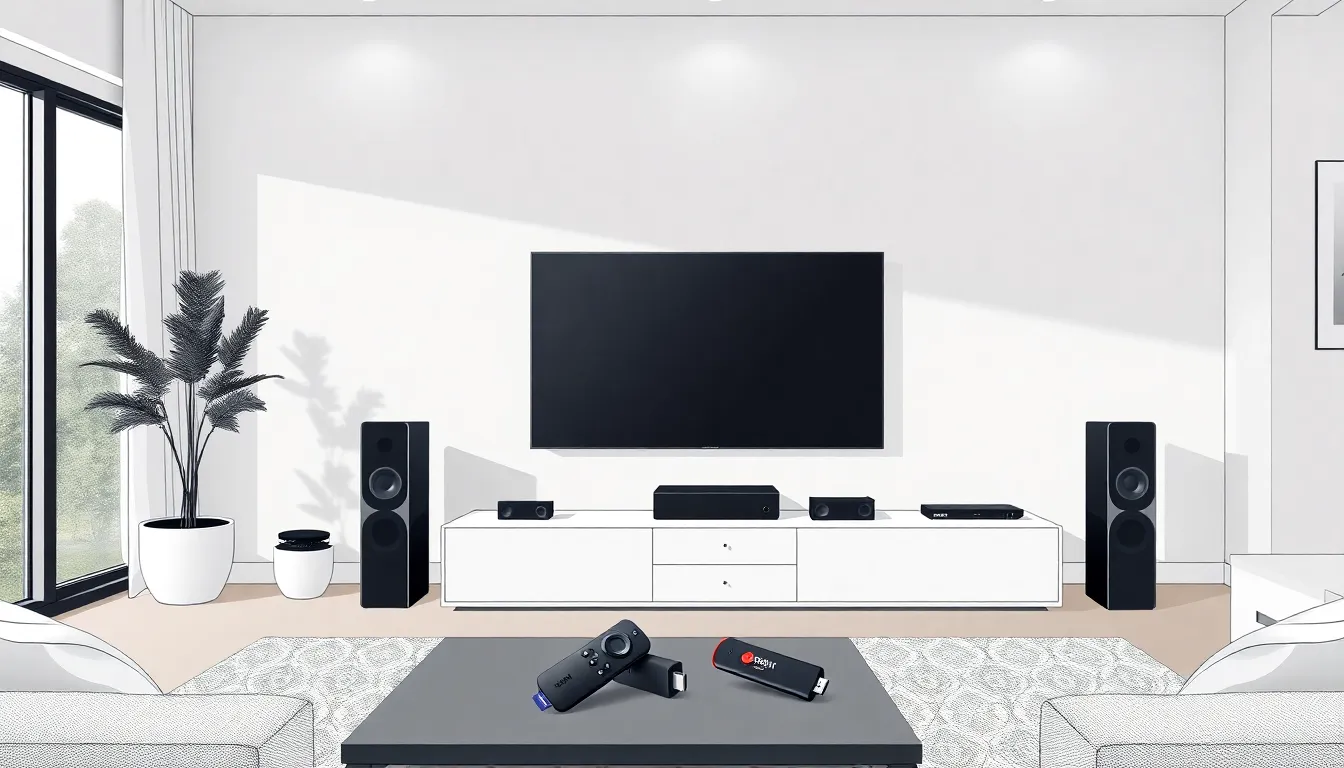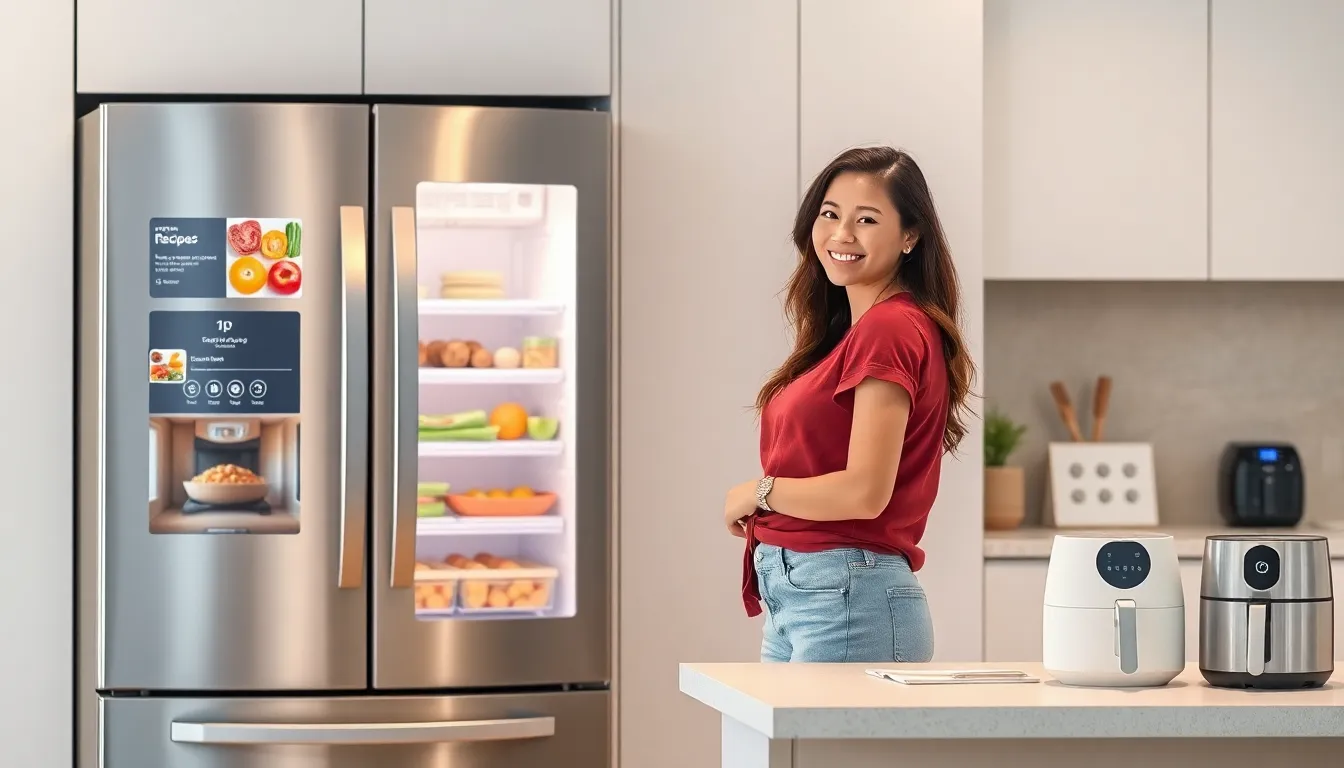In a world where gadgets reign supreme, consumer electronics have become the heartbeat of modern life. From smartphones that double as personal assistants to smart fridges that remind you when you’re out of milk, these devices not only simplify daily tasks but also add a sprinkle of fun to the mundane. Who knew a toaster could be smarter than your average bear?
Table of Contents
ToggleWhat Is Consumer Electronics?
Consumer electronics refers to electronic devices designed for everyday use by individuals. These devices play a crucial role in enhancing lifestyles and simplifying tasks. Examples of consumer electronics include smartphones, tablets, laptops, smart TVs, and wearable technology. These gadgets contribute significantly to communication, entertainment, and daily task management.
Consumer electronics typically feature user-friendly interfaces, making technology accessible to a broad audience. Devices like smart fridges automate food management, while smart speakers provide instant access to information and entertainment. Moreover, innovations such as virtual reality headsets and fitness trackers demonstrate how consumer electronics continuously evolve to meet consumers’ needs.
The global market for consumer electronics demonstrates substantial growth trends. According to Statista, global revenue in the consumer electronics sector reached approximately $1.1 trillion in 2022, with projections indicating an increase in the coming years. This growth reflects advancements in technology, increased consumer demand, and an expanding array of products.
Consumer electronics encompass both wired and wireless devices, driven by the need for portability and convenience. Wireless headphones and Bluetooth speakers highlight the shift toward untethered experiences, allowing users to enjoy audio without the constraints of cables. The integration of smart technology into traditional devices further enhances functionality, making appliances more efficient.
Investments in research and development by leading technology companies fuel continuous innovation in consumer electronics. Products incorporate features such as artificial intelligence, IoT connectivity, and voice commands, elevating user experiences. As consumer preferences shift towards smart and connected devices, the landscape of consumer electronics will continue to transform, enhancing daily living.
Categories of Consumer Electronics

Consumer electronics encompass various categories, each serving distinct needs and preferences. Understanding these categories highlights the diversity within the consumer electronics market.
Home Entertainment Devices
Home entertainment devices enhance viewing and listening experiences. Common examples include smart TVs, sound systems, and streaming devices. Smart TVs integrate internet connectivity, offering access to apps and streaming services. Sound systems, including speakers and home theater setups, provide immersive audio experiences. Streaming devices like Roku and Amazon Fire Stick allow users to access content from multiple platforms seamlessly. These devices primarily focus on delivering high-quality entertainment, reflecting consumers’ demand for engaging media experiences.
Personal Devices
Personal devices focus on individual use, improving communication and convenience. Key examples are smartphones, tablets, and smartwatches. Smartphones combine communication, entertainment, and productivity features, making them essential daily tools. Tablets offer a larger screen for browsing, reading, and media consumption. Smartwatches track fitness metrics, manage notifications, and provide quick access to essential information. These devices cater to diverse personal needs, emphasizing portability and functionality in everyday life.
The Evolution of Consumer Electronics
Consumer electronics have transformed significantly over the decades, reflecting advances in technology and changing consumer needs.
Historical Overview
Consumer electronics emerged in the early 20th century, beginning with simple devices like radios and phonographs. In the 1950s and 1960s, televisions became household staples, revolutionizing entertainment. The 1980s introduced personal computers, marking the entry of technology into everyday life. The 1990s and early 2000s saw rapid developments in mobile phones, transitioning from basic communication tools to multifunctional devices. This historical progression highlights how each generation of technology has shaped consumer habits and preferences, leading to today’s diverse range of smart devices.
Technological Advancements
Technological advancements have driven the continuous evolution of consumer electronics. Innovations in microprocessor technology and miniaturization propelled the development of smartphones, tablets, and wearables. Connectivity improvements, especially with Wi-Fi and mobile networks, enhanced the functionality of devices, leading to the proliferation of the Internet of Things (IoT). Artificial intelligence integration has made devices smarter, enabling personalized experiences for users. These advancements not only improve performance but also empower consumers to engage in an increasingly interconnected digital lifestyle.
The Impact of Consumer Electronics on Society
Consumer electronics significantly shape modern society through communication and lifestyle enhancements. These devices connect people, streamline daily activities, and redefine the way individuals interact with technology.
Communication and Connectivity
Consumer electronics enhance communication and connectivity among users. Smartphones and tablets enable instant messaging, video calls, and social media access. These technologies foster collaboration in personal and professional settings. According to Pew Research, approximately 85% of Americans own a smartphone, reflecting a strong reliance on mobile devices for everyday communication. Internet-connected electronics, such as smart speakers and laptops, provide seamless access to information and online services, further bridging gaps between individuals and communities.
Lifestyle and Convenience
Consumer electronics transform lifestyles by adding convenience to everyday tasks. Smart home devices, like thermostats and security systems, automate routines and enhance safety. Wearable technology, such as fitness trackers, promotes healthy habits by monitoring activity levels and providing personalized insights. A survey by Deloitte highlights that 70% of households possess smart home devices, underscoring their growing prevalence. Additionally, streaming services and smart televisions provide accessible entertainment options, allowing users to curate their viewing experiences effortlessly.
Future Trends in Consumer Electronics
Future trends in consumer electronics highlight significant advancements focusing on smart technology, sustainability, and user experience.
- Artificial Intelligence Integration: Devices increasingly incorporate AI features, enabling personalized experiences. Voice-activated assistants, such as Siri and Alexa, enhance interaction and streamline daily tasks.
- Internet of Things (IoT): The growth of IoT connects appliances seamlessly. Smart homes integrate devices like thermostats, lights, and security systems, allowing remote management through smartphones.
- Sustainability: Eco-friendly products gain popularity, driven by consumer preferences for sustainable materials and energy-efficient devices. Manufacturers respond by developing recyclable gadgets and energy-efficient electronics.
- Augmented Reality (AR) and Virtual Reality (VR): AR and VR technologies expand in consumer electronics. Industries such as gaming, education, and real estate leverage these technologies for immersive experiences.
- 5G Connectivity: The rollout of 5G networks enhances data transfer speeds, impacting devices’ functionality. Faster connections support high-definition streaming, real-time gaming, and smoother virtual meetings.
- Health and Fitness Technology: Wearable devices focus on health monitoring. Smartwatches and fitness trackers provide real-time data on heart rate, step count, and sleep patterns, promoting a more health-conscious lifestyle.
- Foldable and Flexible Screens: The emergence of foldable and flexible display technology reshapes device design. Smartphones and tablets with adaptable screens offer greater portability and versatile usage.
- Voice and Gesture Controls: User interaction evolves with voice and gesture controls, simplifying device operation. This technology minimizes reliance on traditional interfaces, catering to a broad audience.
Investments continue in research and development, ensuring consumer electronics will adapt to evolving market demands. Such trends promise enhanced functionality, improved user experience, and a more connected lifestyle.
Consumer electronics have become an integral part of daily life shaping how individuals communicate work and enjoy entertainment. As technology continues to evolve the market will likely see even more innovative devices that enhance convenience and connectivity. With advancements in artificial intelligence and the Internet of Things consumers can expect smarter and more intuitive products that cater to their needs.
The ongoing growth in this sector reflects a broader trend towards a more connected lifestyle where technology seamlessly integrates into everyday routines. As consumers embrace these changes the future of consumer electronics promises to deliver even greater enhancements to quality of life.




